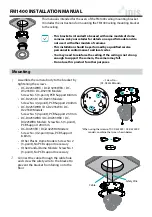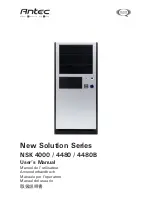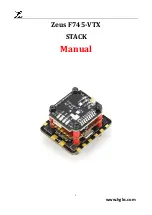FXTH870xD
Sensors
22
Freescale Semiconductor, Inc.
2.
Write the command code for the desired command to FCMD. The five valid commands are blank check (0x05), byte
program (0x20), burst program (0x25), page erase (0x40), and mass erase (0x41). The command code is latched into
the command buffer.
3.
Write a 1 to the FCBEF bit in FSTAT to clear FCBEF and launch the command (including its address and data
information).
A partial command sequence can be aborted manually by writing a 0 to FCBEF any time after the write to the memory array and
before writing the 1 that clears FCBEF and launches the complete command. Aborting a command in this way sets the FACCERR
access error flag which must be cleared before starting a new command.
A strictly monitored procedure must be obeyed or the command will not be accepted. This minimizes the possibility of any
unintended changes to the FLASH memory contents. The command complete flag (FCCF) indicates when a command is
complete. The command sequence must be completed by clearing FCBEF to launch the command.
Figure 9
is a flowchart for
executing all of the commands except for burst programming. The FCDIV register must be initialized before using any FLASH
commands. This must be done only once following a reset.
4.7.4
Burst Program Execution
The burst program command is used to program sequential bytes of data in less time than would be required using the standard
program command. This is possible because the high voltage to the FLASH array does not need to be disabled between program
operations. Ordinarily, when a program or erase command is issued, an internal charge pump associated with the FLASH
memory must be enabled to supply high voltage to the array. Upon completion of the command, the charge pump is turned off.
When a burst program command is issued, the charge pump is enabled and then remains enabled after completion of the burst
program operation if these two conditions are met:
•
The next burst program command has been queued before the current program operation has completed.
•
The next sequential address selects a byte on the same physical row as the current byte being programmed. A row of FLASH
memory consists of 64 bytes. A byte within a row is selected by addresses A5 through A0. A new row begins when addresses
A5 through A0 are all zero.
The first byte of a series of sequential bytes being programmed in burst mode will take the same amount of time to program as
a byte programmed in standard mode. Subsequent bytes will program in the burst program time provided that the conditions
above are met. In the case the next sequential address is the beginning of a new row, the program time for that byte will be the
standard time instead of the burst time. This is because the high voltage to the array must be disabled and then enabled again.
If a new burst command has not been queued before the current command completes, then the charge pump will be disabled
and high voltage removed from the array.
Summary of Contents for FXTH870 D Series
Page 86: ...FXTH870xD Sensors 84 Freescale Semiconductor Inc Figure 57 Data Flow For Measurements...
Page 171: ...FXTH870xD Sensors Freescale Semiconductor Inc 169 Figure 128 QFN Case Outline...
Page 172: ...FXTH870xD Sensors 170 Freescale Semiconductor Inc Figure 129 QFN Case Outline...
Page 173: ...FXTH870xD Sensors Freescale Semiconductor Inc 171...


















